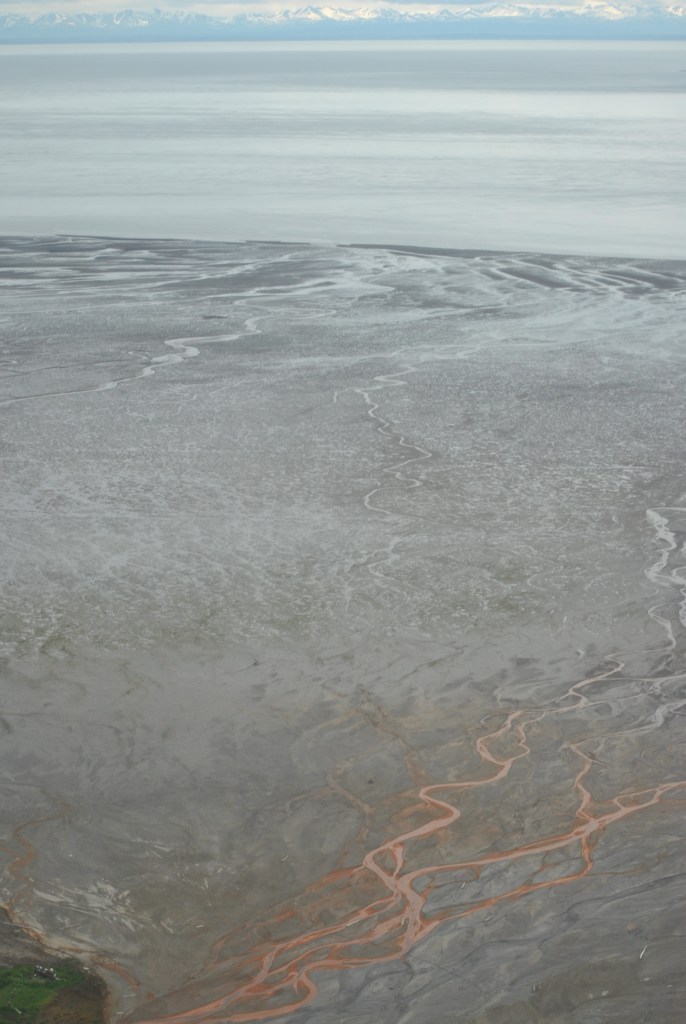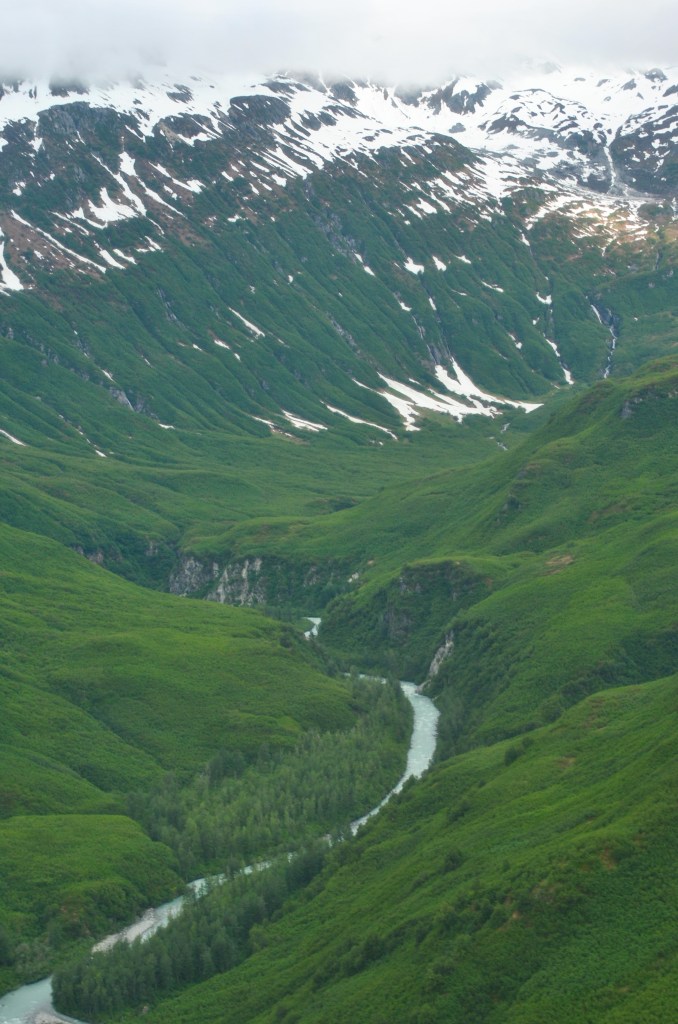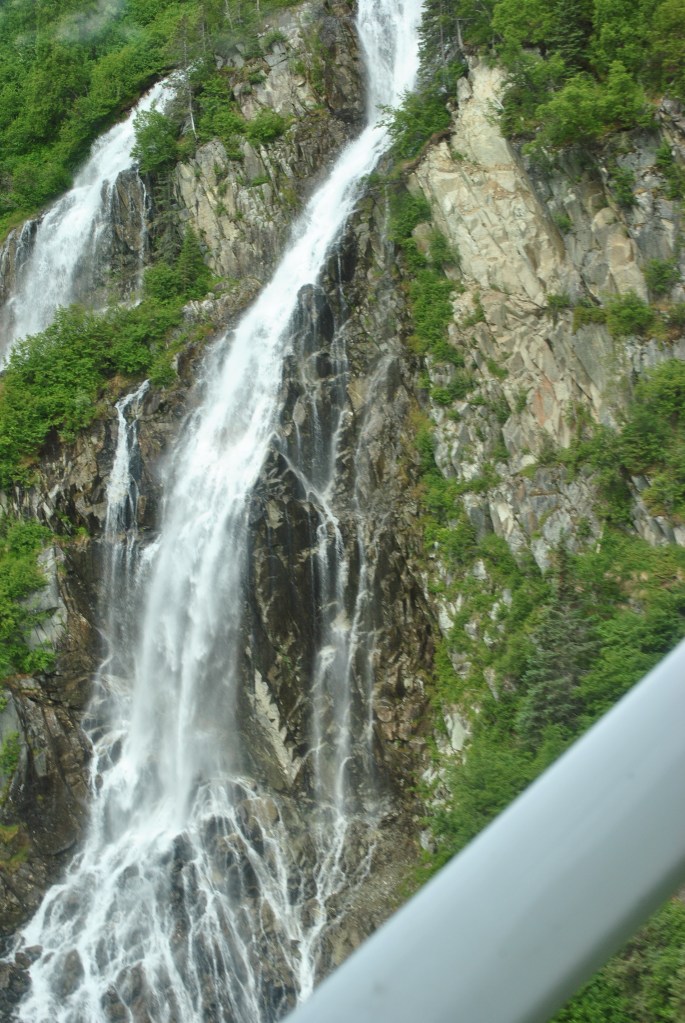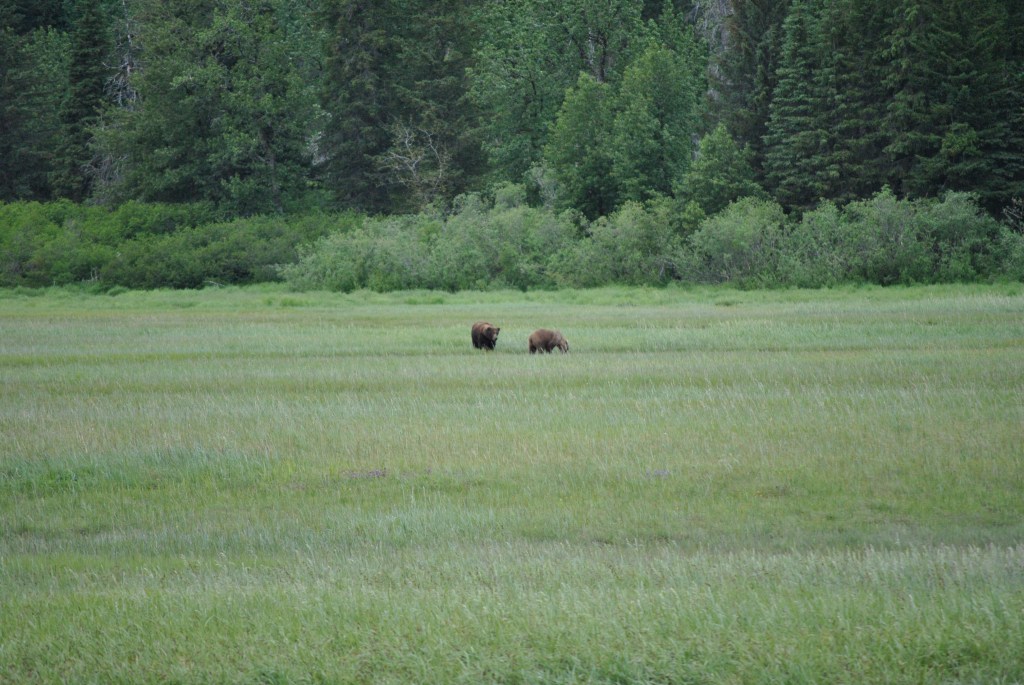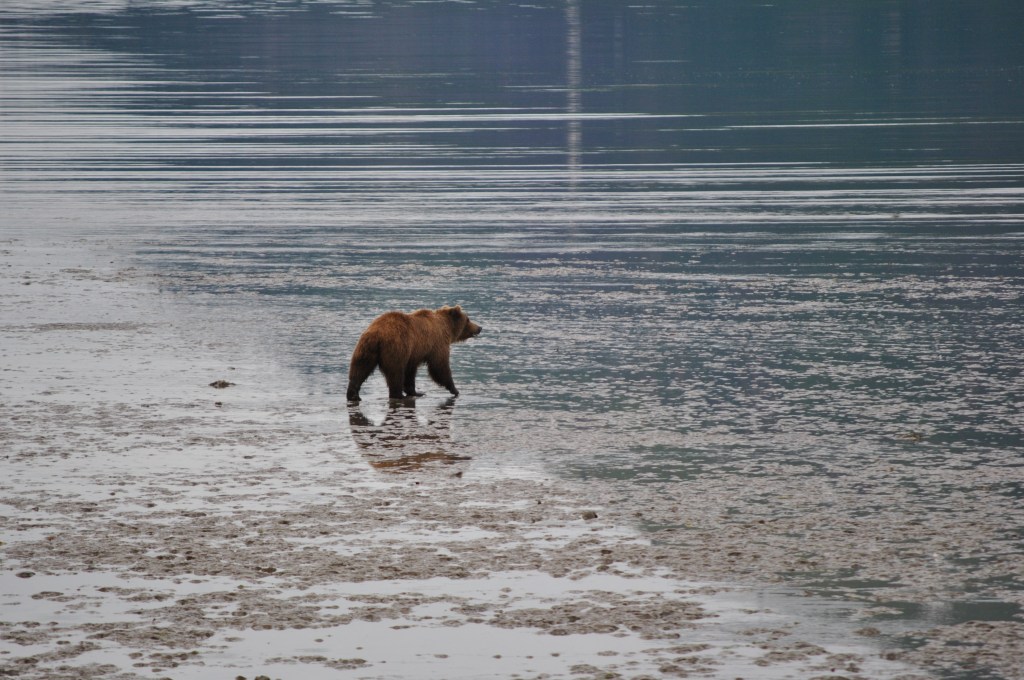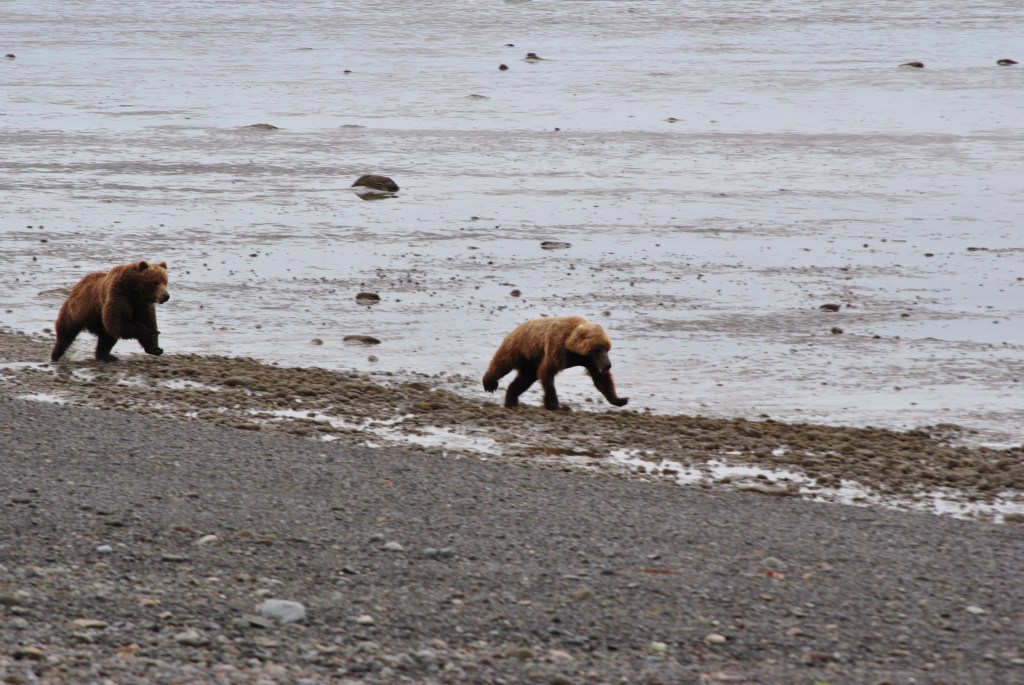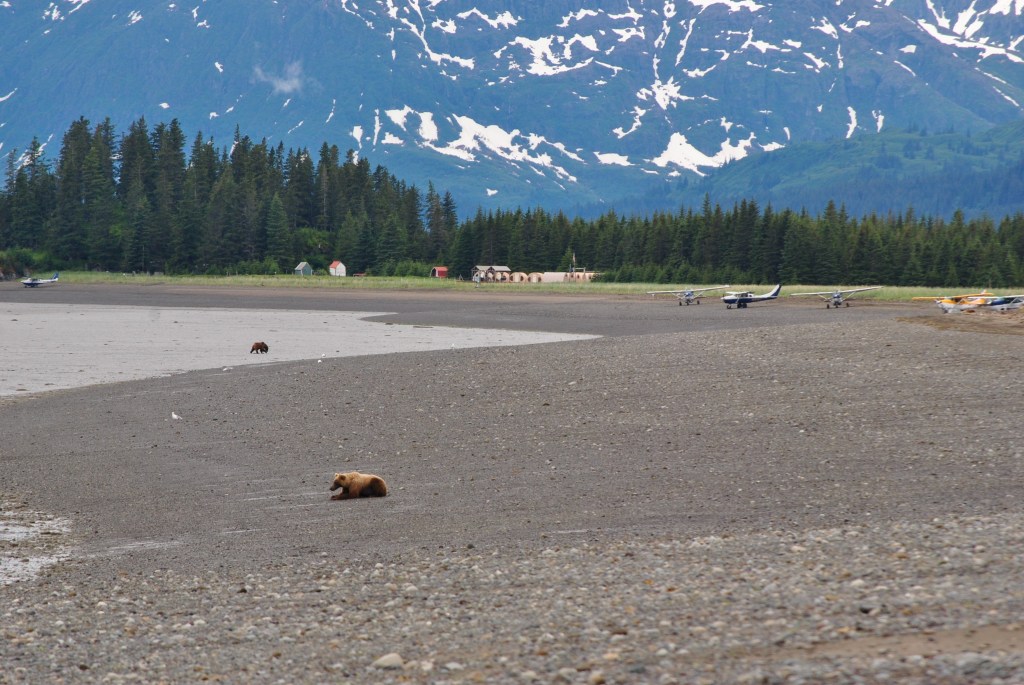Oh, Lake Clark with your kaleidoscope of braided streams and colors to last a lifetime. You hold something ancient and fragile. You are born of fire and ice with volcanoes that rise into the world above. Glacial ice melts and flows into turquoise hues beyond imagination, reaching the sea. The bears know that you will provide. They flock in numbers to your clam rich shores to eat their fill and dance upon the shallow, sparkling tidal flats. The ice melts leaving green jeweled mountain slopes crowned by specter mist. Only the fortunate get to glimpse what you contain, for though you are so much, you are difficult to see.

We embarked on this journey at an airport hanger at Merrill Field in Anchorage. We were guided to the aircraft by our incredible pilot, and found to our delight a small and agile, striped, blue as the sky, 5-seat airplane. Truthfully, while a common taxi in Alaska, at first it looked to us like a small toy. Thrillingly, it was all we needed to take the nearly 100-mile journey to Lake Clark National Park. This remote destination is reached by plane or boat only.

We whooshed into the sky and our tummies did somersaults to see Anchorage disappear below us and the expansive Cook Inlet appear. The tidal forces that shape this inlet are so incredibly strong and dramatic, surfers can enjoy up to 10 foot bore waves as water drains from Turnagain Arm. From the air, the tides create an hourly-changing landscape of pure beauty.

Flying over fish camp structures (utilized by Native Alaskans and others) beluga whales (once harvested from fishing platforms made of tree stumps) rise to the surface in the shallow waters. Their white bodies, rising temporarily, are easily spotted in the glacial silted sea. We fly over verdant green and see the Alaska Range (600 miles in length) jagged and newly rising in the distance, with snow capped icing. We glimpse passageways to the north and see glaciers stripe against the mountains. Then, we begin to spot the brown bears, roaming in the grass along the shores with their little round bodies obvious and moving in the landscape below.
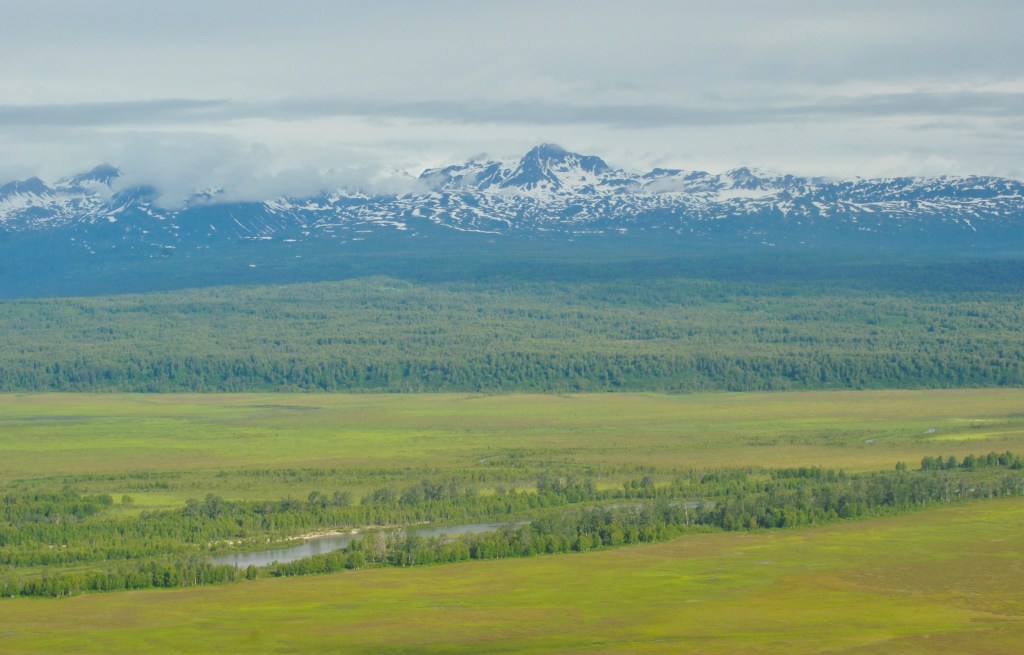
Geomorphology is the study of physical structures on the earth’s surface, and I cannot think of a more concentrated place to see so many features in one place. U-shaped glacial valleys, braided streams, tidal flats, oxbow lakes, alluvial fans, and moraines all roll through my mind like candy.
The scene changes to cliffs, waterfalls, and mist as we turn up Tuxedni Bay, and fly along a glacier. I don’t have words for this. It is mystic and too much for pictures or description, it can only be seen to truly understand. We see lliamna Volcano barely crest through the clouds, still active. We know our presence here is only granted by powers far stronger than anything we obtain. We seek permission to be here.
The beach suddenly comes into view, dotted with small aircraft. This is where we will be landing, not a runway but a gently sloping beach. It’s a thrill, and our pilot gently sets the craft down, and the crunch of the pebbles under the large tires cuts the noise of the engine. We coast to our parking area, and eagerly exit the plane. We feel the ground again.

There are two viewing areas here, small passageways through the forest that leads to a broad sedge prairie. It is set against steep mountain slopes. As soon as you pass through the trees and look around, bears in number come into view. Their roly-poly bodies move surprisingly quickly through the green, gorging on the highly nutritious sedges until the tides roll out far enough to go clamming.

We watch them from a small, fallen log, roughly-hewn, bench. Bears are everywhere, we count eleven!! We observe one large darker brown bear pursuing a smaller cinnamon colored bear. It chases and stops, chases, and stops. It pretends to eat, and circles around, continuously closing the distance. The cinnamon bear is wary, but after the third pass lets down her guard and it happens. Bees do it…and bears do it! It wasn’t quick either.
After the show, we directed ourselves to the ranger housing. On the way, we witnessed another bear pursuit. A sweet little bear with an extra-long snout, whom we later found out goes affectionately by CJ, was being chased relentlessly by a much larger bear. She outran him, and collapsed adoringly on the beach, exhausted.
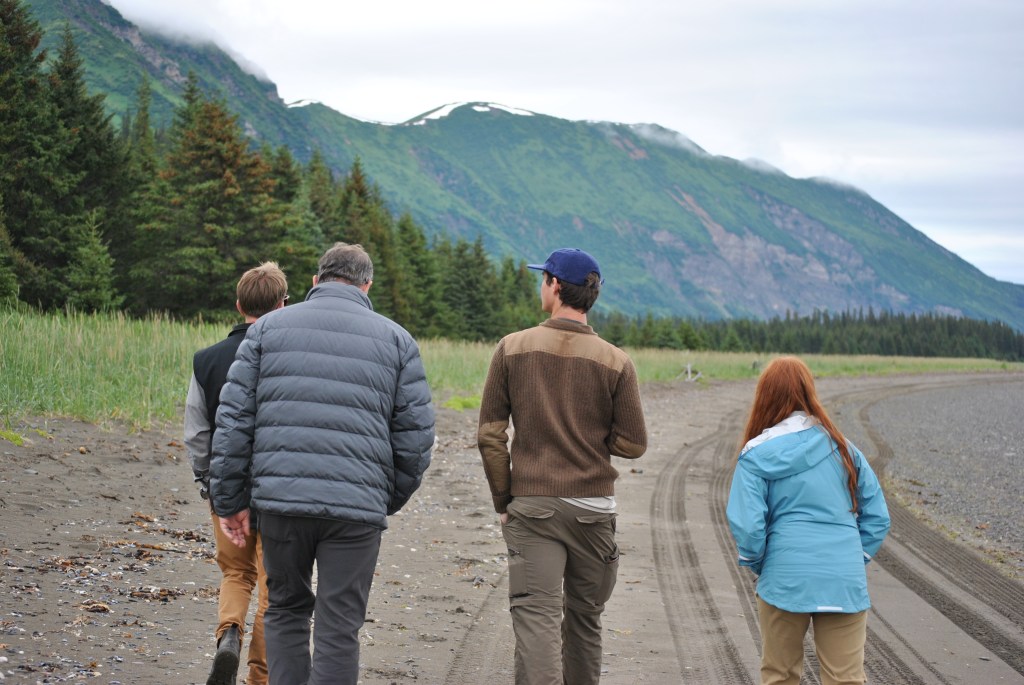
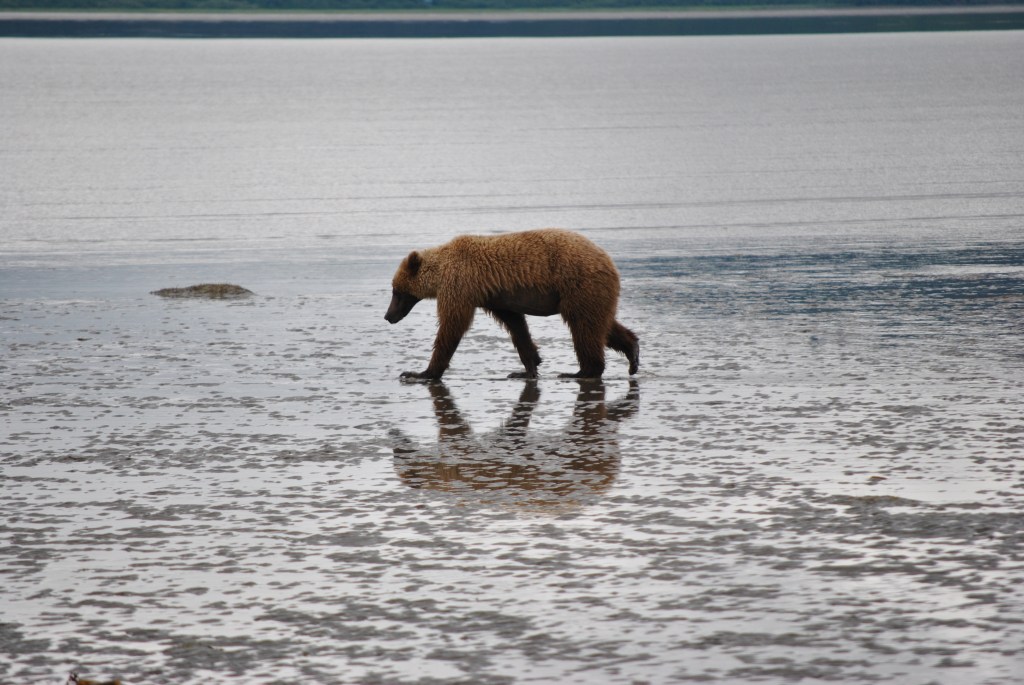
This area of the park was currently overseen by the incredible Ranger Abbey! She graciously gave the kids their Junior Ranger Books and Badges. They took their oaths, and she answered all our questions. I think I’ve said it before, but it goes literal saints and then park rangers in my personal hierarchy of remarkable people that walk this earth. They give so much and though paid in countless intangible ways, theirs is a life of service.

On our way back to the plane we witnessed a mother bear and her cubs. They were but tiny little babies staying close to her paws. New life across the tidal flats, they hung closely to their mother as she warily avoided human clusters and dug for clams. The circle complete.
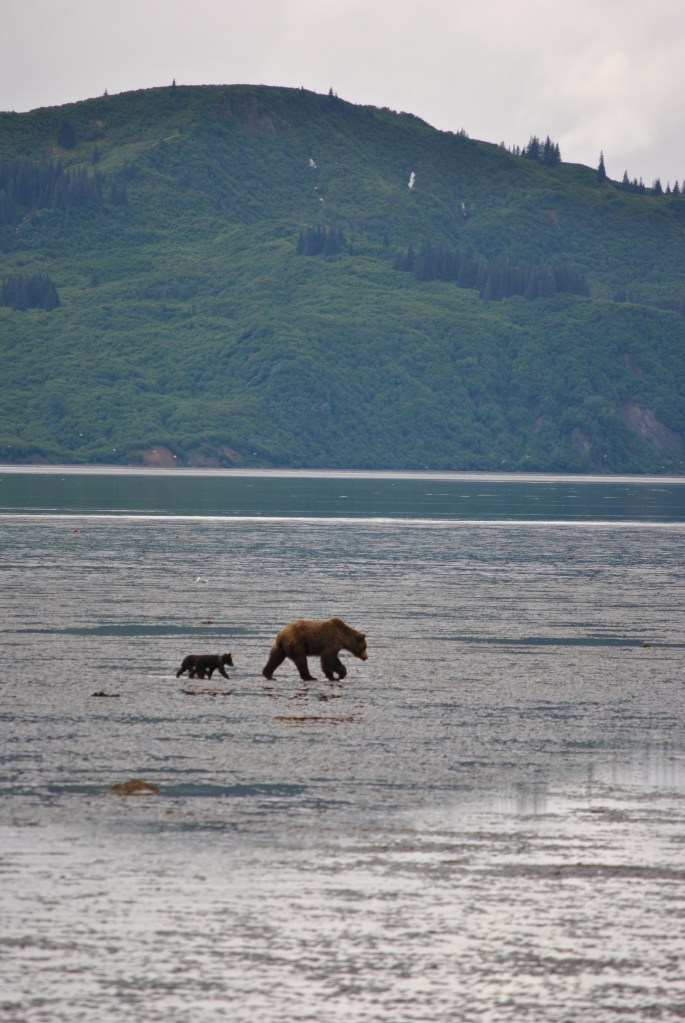
Every park is a spiritual experience, but none have so encouraged me to really consider how I impact the environment and climate change as this. These bears thrive here because the snow melt washes plentiful sediment into the tidal flats where the nutrient laden soil is the perfect place for clams to grown plentiful. It is both a robust, but precarious environment, where even the smallest changes could have dramatic impact on these resident bears. Consume less, enjoy more.
Junior Ranger Badge:
It’s about the bears!
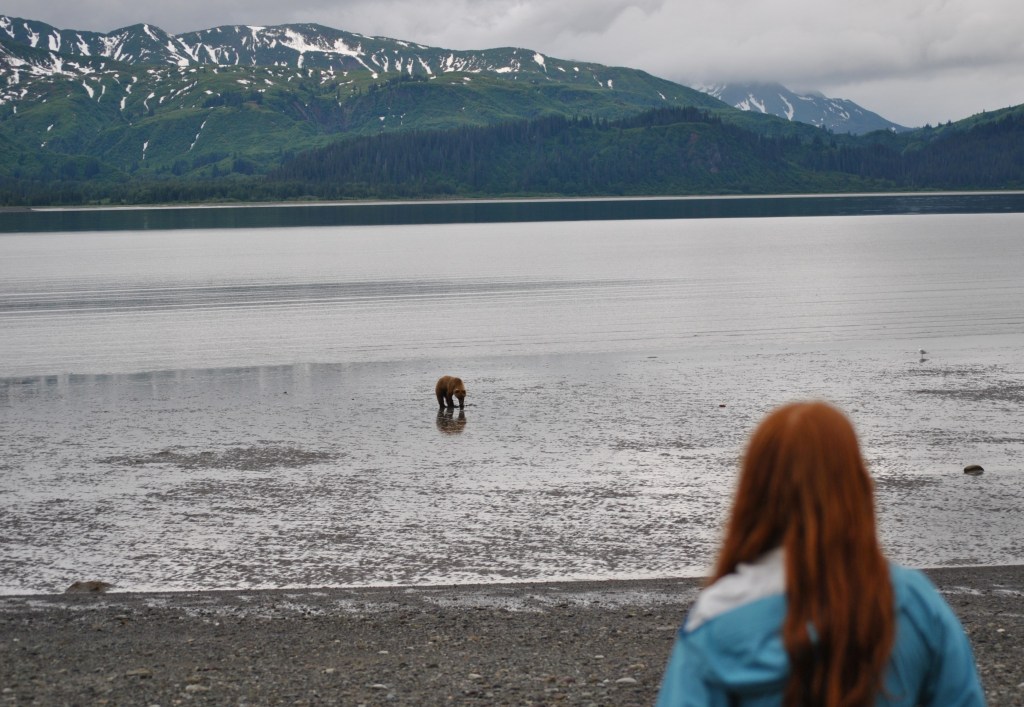
Extra Tips:
Be prepared for inclement weather and mosquitos, which should be a universal for any trip to Alaska. A rain jacket is a must, as well as a good camera.
Don’t bring bear spray with you on any aircraft! It could explode in route and that would be quite bad, maybe even deadly.
Stay close to your pilot/guide during your visit and follow instructions. Their job is to keep you safe throughout your journey to this park, so listen to what they say. If they tell you to group up and stay close together, do this immediately. The bears at this park do not appear disturbed by the presence of humans, but they are very attentive to other bears. Staying close together helps ensure the bears don’t confuse you with another bear.
Don’t have any food items on you while you are walking around the park, unless they are in a bear vault. They produce tantalizing smells, and even a few dropped crumbs could cause the bears to associate humans with food. These bears are not food habituated, and we want to keep it that way.
Bring sturdy walking shoes so that you can walk along the pebble strewn muddy beach to the different viewing locations comfortably. Some wore waiters, but we didn’t find them necessary as our Alaska Air Service crew timed our visit perfectly with the tides, so we did not need to venture out into the muddy flats far to take pictures of the bears.
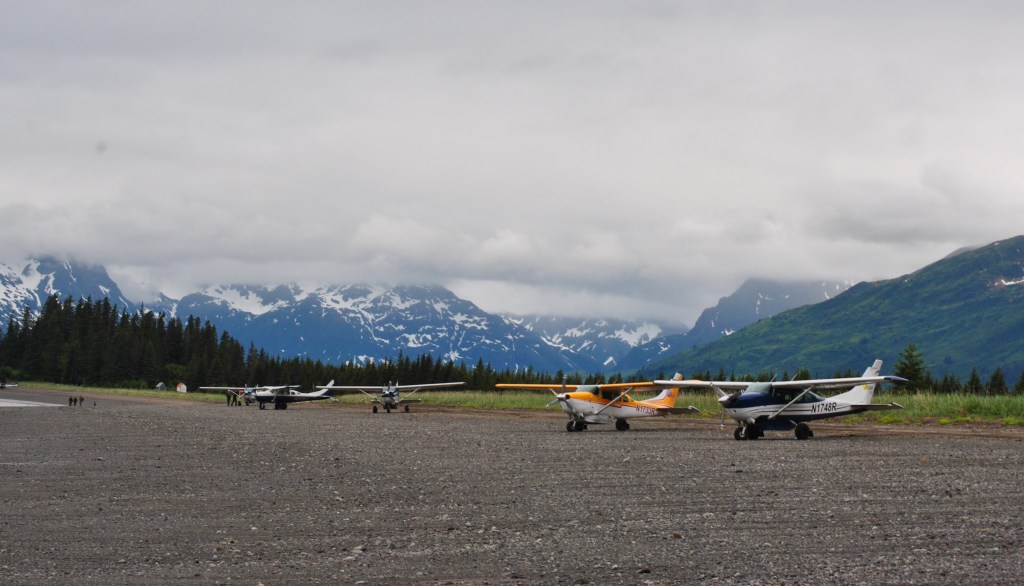
Remember:
This is the bears’ habitat, not yours. This is where they eat, sleep, mate, and raise their young. Give them plenty of room, even if it appears safe to get closer. Even if your guide encourages you to get closer, that doesn’t always mean it is the correct choice. We watched another tour group walking closer and closer to a mother bear and her cubs, and she was obviously alarmed by them. Watch for other tour groups, and make sure the bears always have a safe exit. Don’t pressure the bears by walking too close. There is current research to see if visitor activities are causing undo stress to these animals. If they respond to you in any way, then you are stressing them. Be wise, and respectful, or the privilege of seeing them in this habitat in the future could be jeopardized.

Where to Eat:
There are no food service providers in this park, except for private lodges. Our Alaska Air Service tour included an incredibly delicious picnic lunch with sandwiches, pasta salad, and bottled water. We brought our own re-usable water bottles, which we used throughout our trip to reduce plastic waste. If you wish to bring food onto the plane, please ask your pilot for approval first. They may want to contain the food or place it in a bear proof container or location on the plane to avoid bears curious bears bothering an unattended aircraft.

When to Go:
We went in the middle of June, and it was perfect! There were a few minor drizzles, but the landscape was a luxuriant green and the lupines were in full bloom. The bears were enjoying mating season and were very curious and attentive to one another.

Where to Stay:
Accommodations in this park are limited to independent businesses that operate lodges, and one private campground. There is one primitive campground. See the Lake Clark National Park website for additional information.
Back-country camping is allowed, and as of this publishing a permit is not required, though rules posted on the Lake Clark National Park must be followed, including Leave No Trace, Bear Protection, and adhering to closed areas.


https://www.instagram.com/ourwildoutside/
Posted on: June 21, 2022
Visited: June 2022



